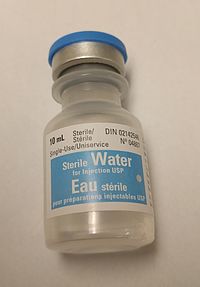
Photo from wikipedia
Abstract Injection of water into wells is a common practice in offshore oil and gas installations, and here as in many other industries the water has to be deaerated before… Click to show full abstract
Abstract Injection of water into wells is a common practice in offshore oil and gas installations, and here as in many other industries the water has to be deaerated before it is sent through miles of pipelines to reduce the risk of corrosion in those pipelines and other downstream equipment. It requires extremely low concentrations of dissolved oxygen for the corrosion of metals to begin, and removing the dissolved oxygen is currently done in large vacuum deaeration towers, a highly energy demanding process, along with additional injection of chemical oxygen scavengers. In many instances these processes are controlled in a feed-forward manner, where the operators rely on infrequent sampling and corresponding measurements to control the process. The possibilities for optimisation in this field are thus numerous. The main challenges are online measurements of dissolved oxygen and their use in feedback control. This article gives a brief review of the state-of-the-art and investigates the potential of using dissolved oxygen as a reliable feedback parameter, taking inspiration from onshore waste water industries which have been dealing with dissolved oxygen feedback control since the 1970’s.
Journal Title: IFAC-PapersOnLine
Year Published: 2018
Link to full text (if available)
Share on Social Media: Sign Up to like & get
recommendations!